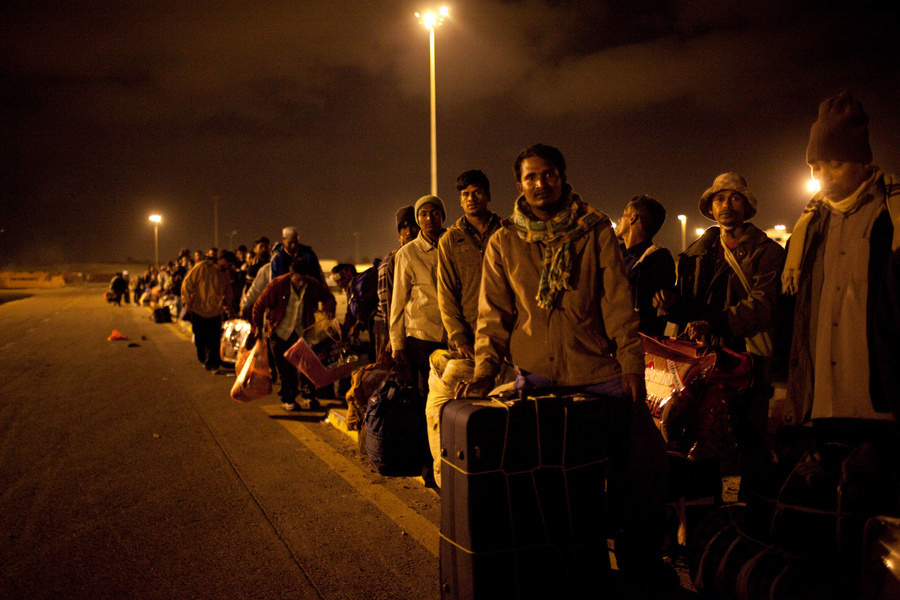A history of humanitarian evacuations
A history of humanitarian evacuations
Keywords - Humanitarian evacuation, humanitarian history, refugee and forced migration studies

(c) IOM/Nicole Tung
Project Summary - Humanitarian evacuation is today well established in both policy and practice. It is part of a policy toolkit for responding to current or anticipated humanitarian crises, with practical techniques allowing the rapid evacuation of large numbers of people. Within three months of unrest breaking out in Libya in spring 2011, for example, the International Organization for Migration oversaw the humanitarian evacuation of some 140,000 ‘third-country nationals’ from the country, mostly migrant workers. But as an articulated policy, humanitarian evacuation is also recent: it only dates back to the evacuation of Kosovo Albanian refugees from Macedonia in 1999, though antecedents are sometimes cited—especially evacuations of children, such as the Kindertransport of the 1930s. There is also relatively little scholarly research on how humanitarian evacuation emerged as a policy, or how the logistical techniques it involves have developed. The experience of evacuation for evacuees themselves is an important blind spot.
This project will explore the history of humanitarian evacuations. It lies at the intersection of several rapidly developing research fields: humanitarian history, the politics of international humanitarian action, and forced migration studies. It aims to contribute to all of those fields, while also informing contemporary policy and practice. Among the key research questions:
- What are the most appropriate research methodologies for understanding humanitarian evacuations?
- What logistical techniques made humanitarian evacuations practicable?
- What political and cultural factors make humanitarian evacuations thinkable: how did this form of long-range population transfer come to be seen as an acceptable solution to a perceived crisis?
- What is the experience of those evacuated?
- How can historical knowledge about humanitarian evacuations best be communicated to practitioners and policymakers?
Project Team - The researcher will be based in History, working with Dr Benjamin Thomas White, a specialist in refugee history with extensive contacts in the humanitarian sector: the project will include a collaboration with CRASH, the in-house think tank at Médecins sans frontières. The other supervisors will help the researcher bring interdisciplinary perspectives and methodologies to the project: Dr Naomi Head (Politics) has worked on humanitarian intervention in the Balkans and the Middle East and the dynamics of emotions and empathy in conflict; Dr Lucy Lowe (Institute of Health and Wellbeing) is a medical anthropologist specializing in the effects of forced migration and protracted displacement on health. The researcher will also be a part of the Glasgow Refugee, Asylum, and Migration Network, an interdisciplinary knowledge exchange network with a dynamic postgraduate community.
PhD Candidate - Michael Wolven

